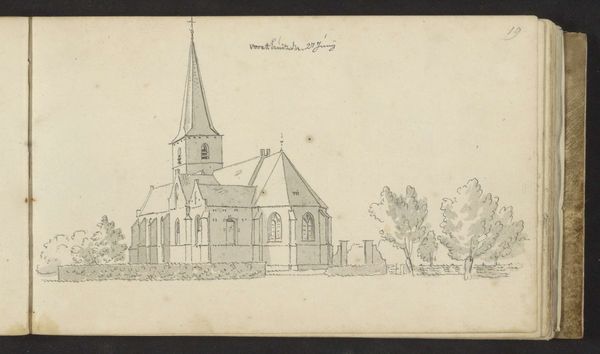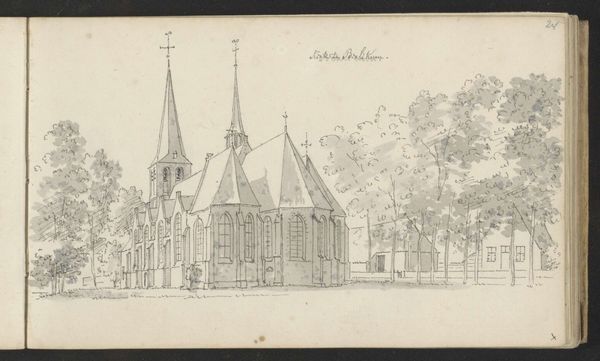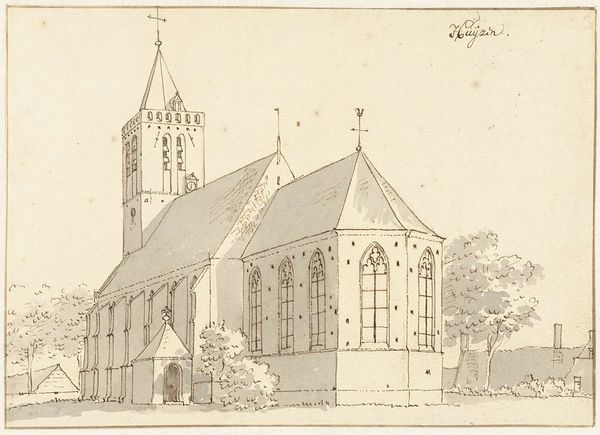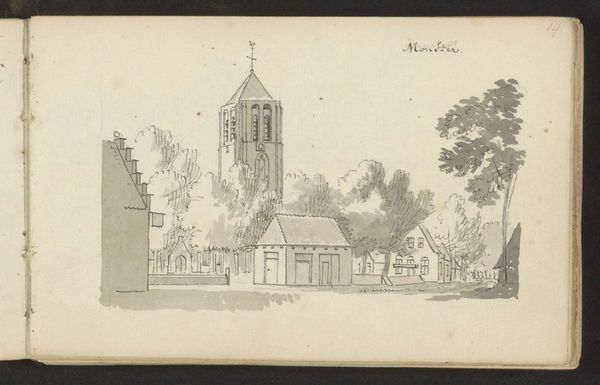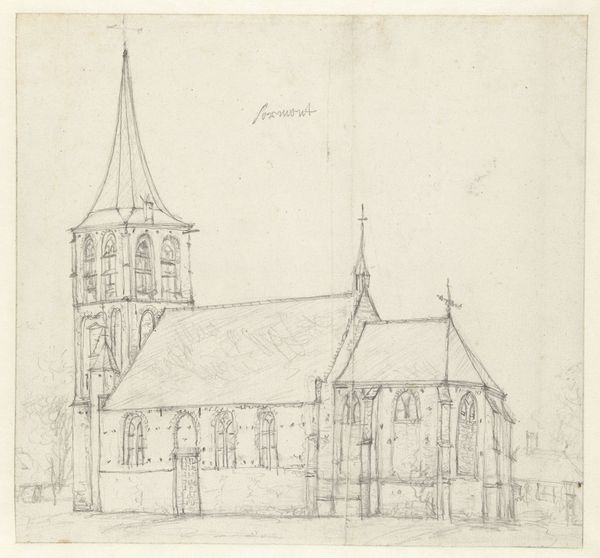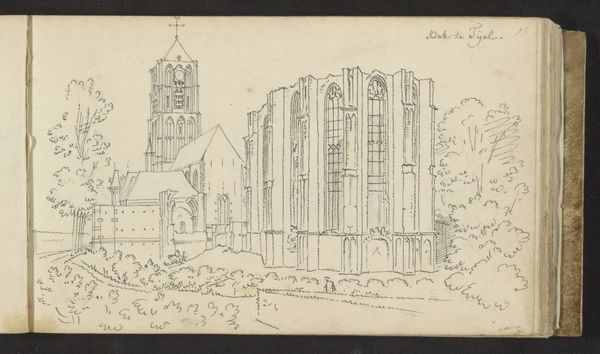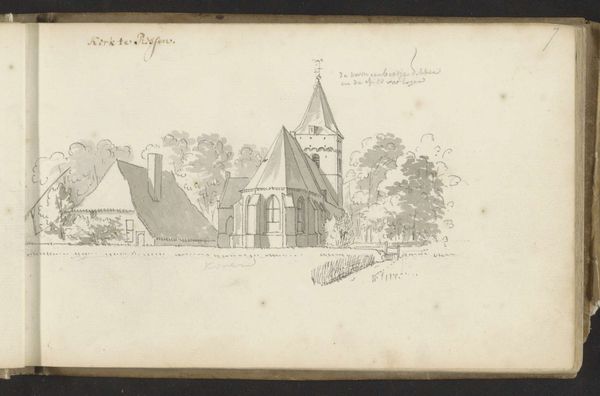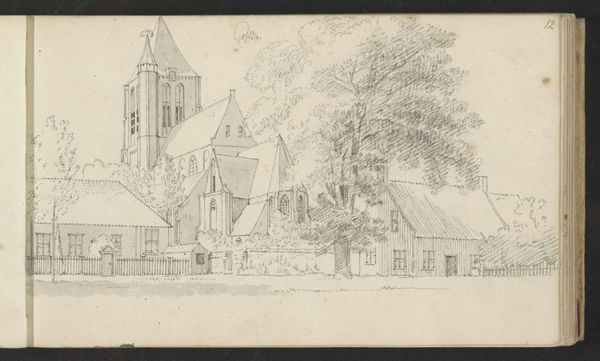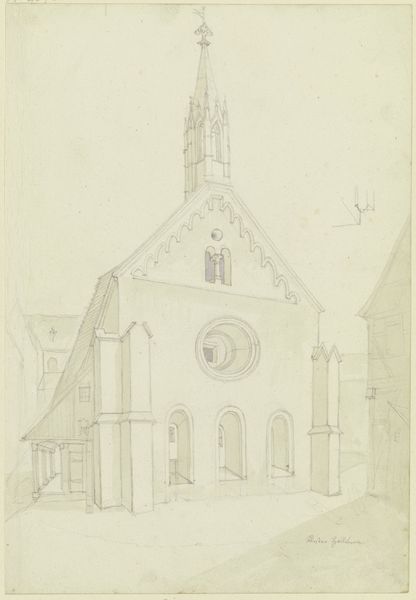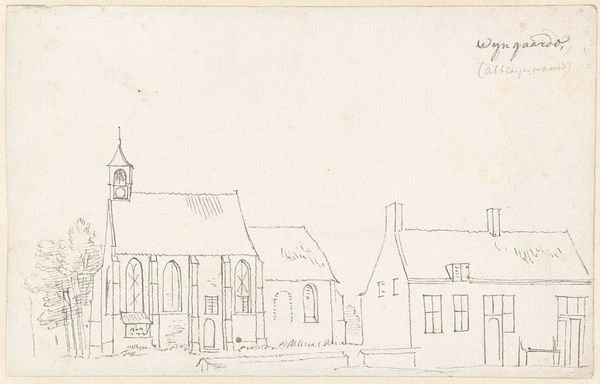
drawing, paper, ink, architecture
#
drawing
#
baroque
#
landscape
#
paper
#
ink
#
architecture
Copyright: Rijks Museum: Open Domain
Editor: This drawing, “Kerk van Maasbommel,” was made with ink on paper sometime between 1701 and 1759 by Cornelis Pronk. It's currently housed at the Rijksmuseum. The stark simplicity of the lines really draws me in. What do you see in this piece? Curator: Beyond the immediate aesthetic appeal, I'm fascinated by the *means* of its production. Consider Pronk’s choice of ink and paper – readily available materials. Were they common choices for architectural studies at the time, reflecting broader social attitudes towards representation and documentation? Editor: That’s interesting, I hadn't thought about the choice of materials as anything other than practical. Curator: Precisely! The "practical" is revealing. Ink drawings are often associated with preliminary sketches. Was this meant to be a preparatory drawing, later to be "finished" in paint perhaps? How does the unfinished quality relate to labor and artistic intention in 18th century Netherlands? Editor: So, by looking at the ink and paper, we're really looking at Pronk's process and perhaps even the value placed on different artistic labor? Curator: Exactly. Pronk isn't just depicting architecture; he is engaging in the act of documentation. The relatively common materials suggest function rather than prestige. We can then examine the market for architectural drawings during this period to think more about Pronk’s targeted consumers, their tastes, their social status. Editor: I see! So, it's not just a pretty picture; it’s also a record of a particular transaction and network of exchanges around labor and materiality! Thanks! Curator: And also an engagement with shifting social values. Looking closely at materials allows us to reconsider traditional boundaries between art and labor.
Comments
No comments
Be the first to comment and join the conversation on the ultimate creative platform.
